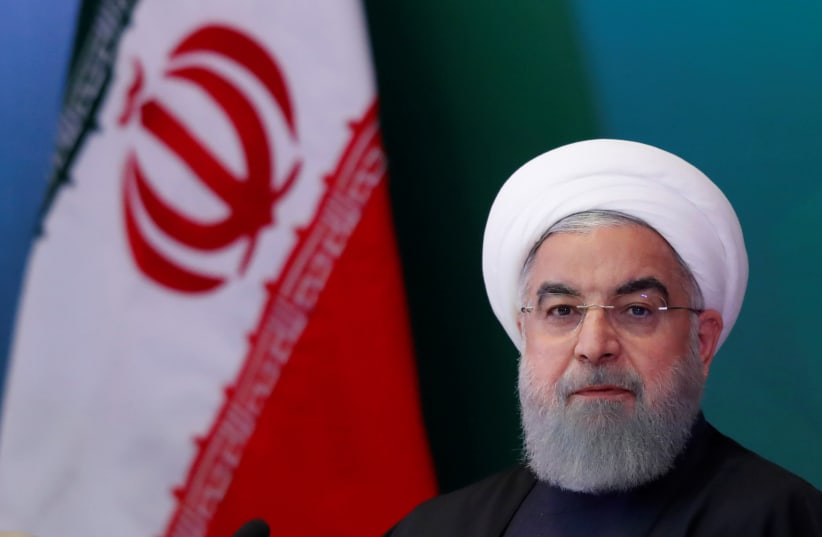A Related Video You May Like:
Ayatollah Khamenei’s Twitter offensive is the bad cop to Rouhani’s good cop routine. Feeding into the western narrative that Iran is divided between “moderates” and “hardliners,” the Ayatollah tweeted on September 24 that Iran “never recognized [the] Zionist regime” and that Iranian athletes won’t compete against “Zionist regime envoys.”Like Rouhani, Khamenei tweets in English and he has several other Twitter accounts in other languages. He only follows seven people.Foreign Minister Zarif, the more popular of Iran’s regime leaders, has more than one million followers. His last tweet was on September 22, which is odd since the foreign minister should be tweeting during the UNGA.His last tweet focused on the terror attack in Ahvaz. His account, or whoever tweets in English for him, channels between moderation and extremism. After the attack, he claimed that “Iran holds regional terror sponsors and their US masters accountable for such attacks.” The day before, he tweeted that the real threat to the region was “the Trump administration’s sense of entitlement to destabilize the world.”The Iranian regime’s strategic use of Twitter is aimed at reaching out to a Western audience, even as Tehran suppresses social media at home. That there is such consistency among the leaders and their use of Twitter points to a regime-wide Twitter campaign.Each leader only follows a select group of the same small circle. There is no sense that these leaders do anything beyond direct messaging to the West, as they don’t tweet about their travels or about anything vaguely personal. They don’t seem to re-tweet others, even within their circle, that often.Compare this to French President Emmanuel Macron or other Twitter users in free societies and the contrast is clear. The parlance in the Twitter usage also doesn’t appear personal. Canadian Prime Minister Justin Trudeau, for instance, tweeted on September 25 that he was “touching base” with the president of Mexico. There’s no sense of folksy banter among Iran’s regime.It’s difficult to measure if Iran’s Twitter offensive is effective. The triumvirate of tweeters, Rouhani-Khamenei-Zarif, get hundreds of retweets and thousands of likes for each tweet. But with so many followers and given Iran’s centrality in world affairs today, they should be getting more. If their intention is to play into the “moderate-hardliner” spectrum and convince the world that the regime is reasonable, they appear to have accomplished their task at the recent UNGA.
Iran’s Twitter offensive and the UNGA
Rouhani tweets relatively frequently, but whoever runs his account pulled out the stops for the UNGA.
